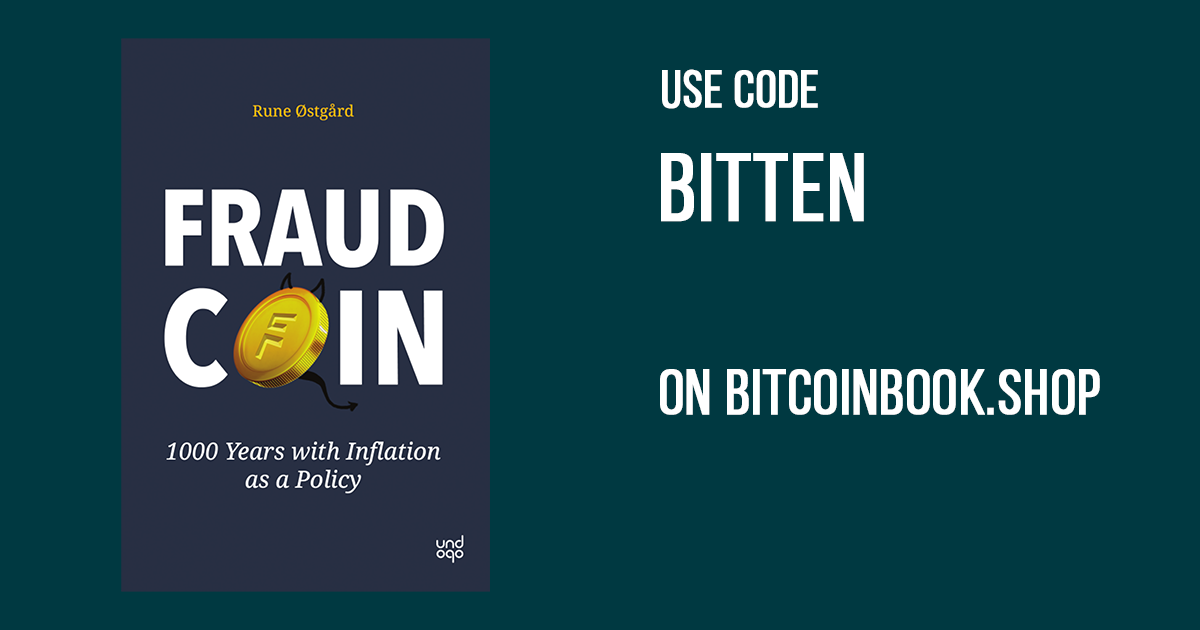·Daniel Prince · blog · 7 min read
King Henry VIII’s inflation scheme
With the word ‘inflation’ consistently in the news and part of our daily conversation, let’s explore the policy of Fiat currencies and a well-documented historical account of good old-fashioned currency debasement.

With the word ‘inflation’ consistently in the news and part of our daily conversation, let’s explore the policy of Fiat currencies and a well-documented historical account of good old-fashioned currency debasement.
Currency Debasement and Fiat Policy
Fiat is Latin for ‘be done’, ‘by decree’ or ‘by order of.’ Hence, a ‘Fiat Currency’ is an order by the Government, Monarchy or Overlord to use their chosen and controlled medium of exchange when you pay taxes. The government typically also dictates that everyone must accept the currency as payment, known as legal tender legislation, or face jail if they object to the offer.
Are you beginning to see the problems with this system?
Let’s take a look at just one historical example.
In 1542, in England, King Henry the 8th (of six wives and Church of England fame) sat atop his throne. He was aghast to learn that his lavish lifestyle and penchant for waging war against France and Scotland was bleeding the royal coffers dry. To address the problem, he did what many a sociopath had done before him and would do again; he secretly issued the ‘Great Debasement Policy’. The King ordered that the amount of gold and silver used to mint the country’s coinage be secretly reduced and replaced with cheaper and more abundant metals such as copper. The debased coins were minted and stockpiled in the Jewel Tower at the Palace of Westminster. No, the irony should not be lost on you that the Palace of Westminster is where the current and bankrupt UK Government still overtly run a currency debasement scheme to this day.
 A Testoon in perfect condition.
A Testoon in perfect condition.
Two years after the King’s order to initiate the plot, in May 1544, a lack of bullion arriving at the Royal Mint prompted the government to release the secret stockpile of the debased coins into general circulation. One line of these coins, known as the ‘Testoon’, was covered in a thin layer of silver. Once in circulation and crossing the palms of the general public, bouncing around in pockets and purses, the silver started to wear off, most notably over the protruding nose of his portrait. It was at this point that the public began to become aware of King Henry’s scam, with each worn coin slowly revealing the copper and the true nature of his crimes.
King Henry was duly nicknamed ‘Old Coppernose’ by his subjects.
 A Testoon showing how easily chipped and eroded it became over time. Notice the spot on his nose, which was the first telling point of the debased coins.
A Testoon showing how easily chipped and eroded it became over time. Notice the spot on his nose, which was the first telling point of the debased coins.
From Deception to Reformation
The people began to understand that they had been duped by what the Mint had done by order of the Sovereign and that the currency they now held was not a true representation of their work, effort, skill, energy or labour.
At this point, you would think a revolution would be on the cards, right?
Wrong.
Old ‘H’ lived for another three fat happy years until passing away in 1547 and being replaced by his nine-year-old son, King Edward VI, yes, nine!
Unsurprisingly, the debasement programme carried on during the ‘reign’ of the nine-year-old King Edward VI under the vigilant guidance of his economic advisors. Sadly, Edward was a sickly child, or he was slowly poisoned, depending on which historical accounts you read, and died in 1553, just six years later, aged 15. At his wishes, Lady Jane Grey was pronounced Queen of England. She lasted nine days before King Henry’s daughter Mary rode into town to claim the throne and duly executed her.
It is believed that during her 6-year reign, Queen Mary had instructed her economic advisors to draft plans for a currency reform to reverse the ‘Great Debasement Policy’ that had been ordered by King Henry. However, she was unable to implement the strategies before her untimely death in 1558, aged 42, which was attributed to ovarian cysts or uterine cancer.
Next was half-sister Elizabeth, daughter of King Henry VIII and Anne Boleyn, who took the throne in November 1558 to reign for the next 45 years. When Elizabeth took the throne, England’s debasement scheme greatly affected the people’s trust and confidence in the monarchy. At the same time, foreign trading relations suffered as merchants refused to accept the debased currency as payments and would only accept finer coinage. The good coins disappeared from circulation, most likely because they left the shores of England and were being hoarded instead of spent.
William Cecil and Thomas Gresham advised Queen Elizabeth to pull the debased currency out of circulation and replace it with new and finer coins. Under the instruction of Queen Elizabeth I, a law was passed stating that no ‘good’ coinage could be used to pay for foreign goods and that the legal tender status of all debased coins be ended. In 1560, Gresham had all the debased coinage withdrawn from circulation and melted down. The Mint replaced them with finer coins, bringing more stability to the economy, which improved foreign relations and restored trust in the monarchy.
You may have heard of Gresham’s Law before. As explained above, he realised that ‘bad money drives out good money’ when the finer coins were being hoarded or used to pay foreign tradesmen who would accept nothing less.
This way of making people suffer at the mercy of their sociopathic leaders has been played out time and time again throughout history. It is still going on to this day, except now, they use mystical terminology such as ‘Quantitative Easing’ and explain that they must ‘grease the wheels of the economy”.
Have we learnt our lessons from history?
It would seem not. Our current-day scammers pulling the same trick are, to name but a few, The Federal Reserve, The ECB, The Bank Of England, The Bank Of Japan, The SNB and any other Central Bank or Government around the world as they race each other to debase their currencies. They assure us that it’s for ‘our benefit’. They are careful to set a tempo in the money creation that doesn’t cause any uprising.
It’s at this point of realisation that one needs to pause and reflect on the true nature of this deceptive policy and the effects it has on the citizens as well as the social fabric. The government coerces us to use a medium of exchange that it manipulates by systematically increasing the supply, thereby debasing its value.
The same government then obliges you to hand over an ever-increasing percentage of your wages for the ‘safety and services’ that it claims nobody else can offer you, whilst its scheme destroys the very economy that you expend time and energy to contribute to.
Under this Regime, which is the same in almost all countries worldwide, we stand no chance of true prosperity and ethical distribution of wealth. As entrepreneurs, savers and consumers alike are left without any apparent signal, no real idea of value, and no guiding star, we have yet to learn what a truly civilised world could look like.
So, how do you protect yourself from an economic system and a currency that the Central Bank and Government have designed to defund you and your family gradually? We would need to design a completely different form of money that would store rather than lose value over time. Something that was not in the control of any centralised power. A means of exchange that would run on an open economic system that anyone could easily verify. Money that was global and available to anyone of any age from any race or religion without permission. A store of value that would always maintain and become more scarce and desirable over time — an instrument that was difficult to confiscate or steal. Money that could be sent digitally in a matter of seconds to cater for the needs of people living in a modern, interconnected and highly interdependent civilisation.
Thankfully, this money has been available to us since 3rd January 2009.
It works, and it has protected millions of people and their families around the world.
The money is Bitcoin. Your educational journey starts here.
Daniel Prince.
Author of Choose Life. Buy the book here!
Special thanks to Rune Ostgard for the inspiration to write this article and his help with the editing.
You can further your education about this topic by reading Rune’s book Fraudcoin - 1000 Years of Inflation as a Policy.




